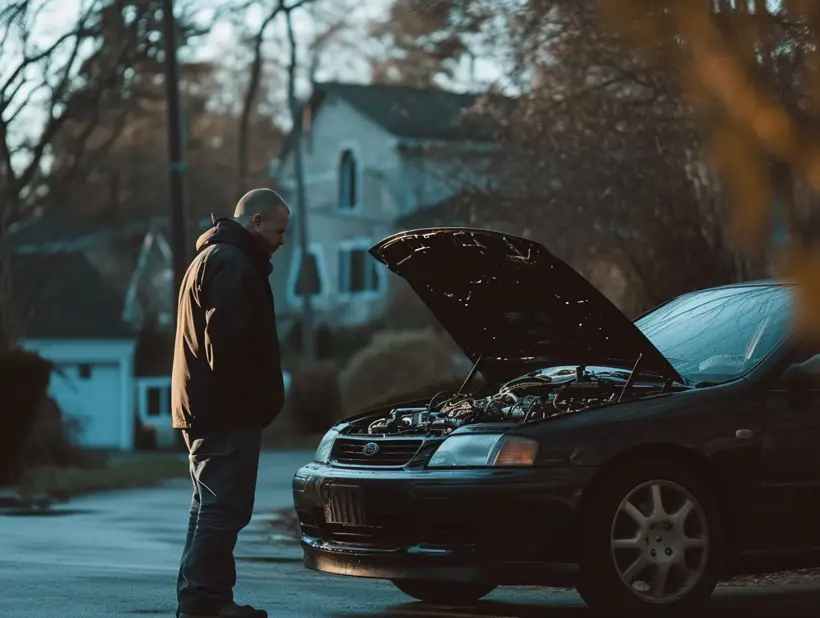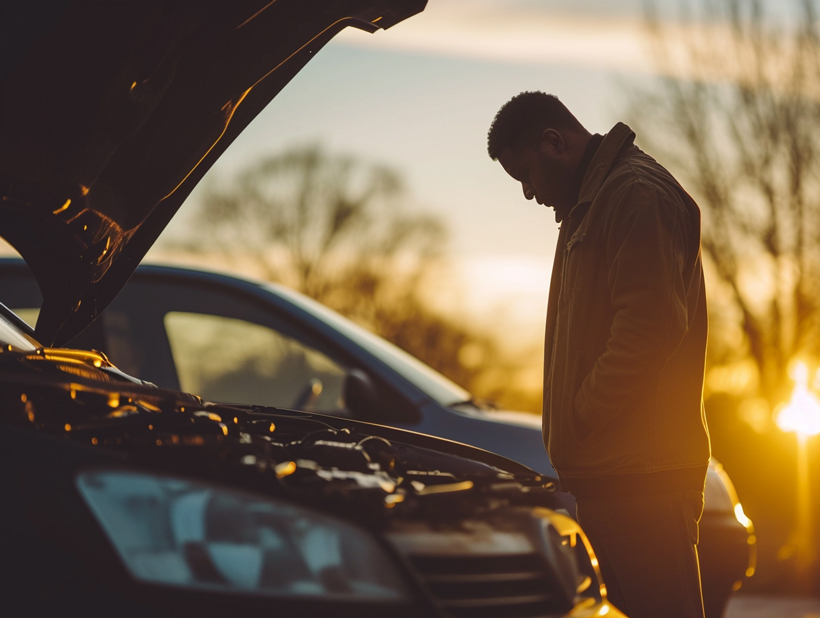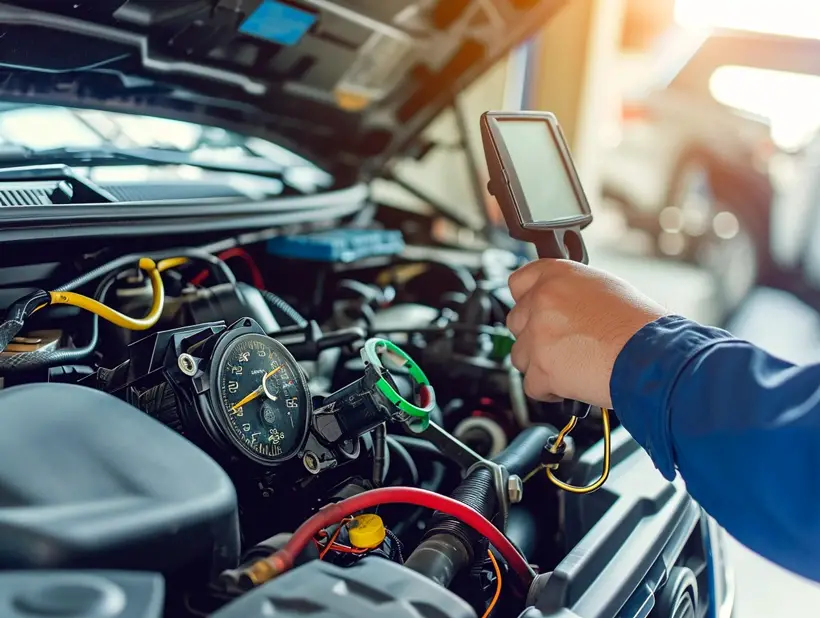Ever filled up your tank only to find your car refusing to start moments later? It’s a frustrating scenario many of us have faced. We’re here to shed light on why this happens and how to diagnose these perplexing fuel-related no-start issues.
Understanding the root cause is key to a quick fix. We’ll guide you through the common culprits, from fuel pump woes to vapor lock, so you can get back on the road swiftly.
Don’t let a post-refuel hiccup leave you stranded. Stick with us as we delve into the nitty-gritty of fuel system diagnostics and turn that silent engine over into a purring success.
Common Causes of Car Not Starting After Getting Gas
When we encounter a car that won’t start right after getting gas, a few culprits typically come to mind. We’ll explore some of the most common causes, helping to narrow down the issue and steer us toward a solution.

Faulty Fuel Pump
At the heart of the fuel delivery system is the fuel pump. If the pump is malfunctioning, it might not provide enough pressure to get the fuel to the engine. Here are signs that point to a faulty pump:
- Whining noise from the fuel tank
- Difficulty in starting
- Engine sputtering
- Stall under stress or high temperatures
Vapor Lock
Vapor lock occurs when fuel changes from liquid to gas while still in the fuel system, often due to high temperatures. This can prevent fuel from reaching the engine, making it impossible to start the car immediately after filling up. Our focus should be on the following:
- Check for excessive engine heat
- Inspect fuel lines for damage or proximity to heat sources
Contaminated Fuel
Bad gas can wreak havoc on our car’s performance. If contaminants clog the fuel filter or fuel injectors, the natural flow of fuel is disrupted. Symptoms of contaminated fuel include:
- Misfires or rough idling
- Decreased power and acceleration
- Poor fuel economy
Fuel System Blockage
A blockage in the fuel system might also be the root cause. Blockages can occur in the:
- Fuel filter
- Fuel injectors
- Fuel lines
Malfunctioning Sensors
Our cars rely heavily on sensors to function correctly. A faulty sensor related to the fuel system can cause no-start issues. Key sensors to check include:
- Mass airflow (MAF) sensor
- Oxygen (O2) sensor
- Fuel pressure sensor
Understanding these common issues will significantly assist in pinpointing the cause of a car not starting after getting gas. Regular maintenance and prompt attention to any changes in our car’s performance can often prevent these problems from escalating. Let’s keep an ear out for unusual noises, an eye on performance changes, and our senses alert for any smell of gas inside the vehicle.
Understanding Fuel Pump Issues
When our car refuses to start after we’ve filled the tank, it’s essential for us to acknowledge the role of the fuel pump. This component is tasked with delivering fuel from the tank to the engine. A failure here can leave us stranded.
Here’s what we need to know about fuel pump issues:
First, a worn-out fuel pump may struggle to supply the necessary pressure, and over time, it could fail completely. It’s not a sudden event but a gradual decline in performance we might overlook.
Secondly, electrical problems can plague the pump. Corroded connections or faulty wiring disrupt the pump’s power supply leading to inconsistent performance.

Another culprit is a clogged fuel filter which can be part of the pump assembly in modern cars. This blockage restricts fuel flow, preventing our vehicle from starting.
Let’s break down some common symptoms of fuel pump problems:
- Difficulty starting the vehicle
- Sputtering engine
- The engine stalls at high temperatures
- Loss of power under stress, such as driving uphill or carrying heavy loads
- Unusual noise from the fuel tank area
To diagnose a fuel pump issue, we should:
- Listen to the pump: A healthy pump makes a low hum during operation.
- Check the pressure: A fuel pressure gauge will tell us if the pump is delivering the correct pressure.
- Inspect electrical connections: We must ensure they’re clean, tight, and free of corrosion.
| Component | Symptom | Diagnostic Action |
|---|---|---|
| Worn-out Fuel Pump | Gradual decrease in engine performance | Listen for pump operation; check fuel pressure |
| Electrical Problems | Engine fails to start or performs inconsistently | Inspect electrical connections |
| Clogged Fuel Filter | Difficulty starting; lack of engine power | Replace filter; monitor for improvement |
Regular maintenance can prevent many fuel pump issues, ensuring we’re not caught off guard by a sudden failure. Keep in mind, the fuel pump is just one potential issue. If we’ve ruled out the pump, our investigation shouldn’t stop there‚Äîother components like the fuel injectors or a failing battery could also be at play.
Signs of Fuel Pressure Problems
When we encounter issues with our car not starting after refueling, it’s crucial to consider fuel pressure problems as a prime suspect. Fuel pressure is the force at which fuel is sent to the engine. Insufficient or excessive fuel pressure can lead to a variety of issues with starting and running your car.
Recognizing the symptoms of fuel pressure problems is key to diagnosing the issue:
- The engine cranks but doesn’t start.
- Sputtering or stuttering during acceleration.
- A noticeable decrease in fuel efficiency.
- Engine misfires or stalling when coming to a stop.
We can employ a range of diagnostic steps to pinpoint the exact nature of the problem. Using a fuel pressure gauge is one of the most direct methods. This device allows us to measure the pressure in the fuel line to ensure it’s within the manufacturer’s recommended range.

Troubleshooting may reveal that the symptoms align with either too high or too low fuel pressure. For most vehicles, the preferred fuel pressure range varies but typically falls within 30 to 60 psi.
Here’s how we categorize the issues:
| Fuel Pressure Condition | Possible Symptoms |
|---|---|
| Too Low | Hard starting, engine stalling |
| Too High | Rich-running engine, spark plug fouling |
If we determine that the fuel pressure isn’t within the ideal range, it’s often due to problems with the fuel pump, a blockage in the fuel lines, or a faulty pressure regulator. It’s essential that we check these components:
- Inspect the fuel pump for wear or damage.
- Evaluate the fuel filter for clogs that can impede flow.
- Test the functionality of the fuel pressure regulator.
To avoid disruptions in our day caused by a non-starting vehicle, keeping tabs on the fuel system health through regular check-ups is advisable. While we’re at it, we should consider other fuel-related components like injectors and sensors, as these also play a role in maintaining proper fuel pressure.
By identifying the signs of fuel pressure problems and acting proactively, we ensure not only the longevity of our vehicle’s fuel system but also its reliability when we need it most.
Exploring Vapor Lock
When we’re troubleshooting a no-start situation after refueling, vapor lock should be on our radar. But what is vapor lock? It’s a condition where fuel transforms from liquid to gas while still inside the fuel delivery system. Typically, this issue occurs in high temperatures and can prevent the engine from starting because the fuel pump can’t effectively pump vapor.
Vapor lock can be deceptive because it mimics the symptoms of other fuel system problems. Here are some signs we might notice when vapor lock is present:
- Difficulty starting the engine when hot
- Sudden stalling after the engine starts
- Loss of power under stress, such as driving uphill
With vapor lock, the fuel evaporates due to excessive heat rather than remaining a liquid. Historically, vapor lock was more common in older vehicle models with carbureted engines. However, even today’s fuel-injected systems aren’t wholly immune, especially during scorching weather conditions. The components at risk include the fuel lines, fuel pump, and the engine itself, which can become too hot and cause the fuel to vaporize.
To determine if vapor lock is the issue, we should check the following:
- Fuel Line Positioning: They should be away from heat sources.
- Insulation: Proper insulation of fuel lines can prevent overheating.
- Fuel Pressure: We can verify if the fuel system maintains the correct pressure when hot.
An effective strategy to prevent vapor lock involves regular inspection and maintenance of the fuel system. Ensuring that the components are in top condition and that the fuel lines are correctly insulated can save us numerous headaches. Moreover, during extremely hot weather, we might consider parking in the shade, using a heat shield, or even upgrading to components that are less susceptible to heat, thereby reducing the likelihood of vapor lock.
How to Diagnose Fuel System Related No Start Issues
When faced with a stubborn car that won’t start after refueling, we first need to confirm that the problem is indeed related to the fuel system. Diagnosing these issues can be complex, but by following a systematic approach, we’ll break down the process into manageable steps.

Check the Basics
Before diving into more advanced diagnostics, we should always verify the basics:
- Ensure there’s fuel in the tank.
- Listen for the fuel pump priming sound when the ignition is turned to the “ON” position.
- Check for any dashboard warning lights indicating a system malfunction.
Fuel Pressure Test
One of the most definitive tests we can perform is checking the fuel pressure. Fuel pressure that’s too low or too high can prevent the engine from starting properly. A fuel pressure gauge connected to the fuel rail provides real-time data on the fuel pressure:
- Acceptable Fuel Pressure Values:
If the pressure doesn’t fall within these ranges, there could be an issue with the fuel pump, filter or injectors.
Inspect Fuel Delivery Components
Certain components are vital for correct fuel delivery:
- Fuel Pump: Its sound or lack thereof can be a quick indicator of a problem.
- Fuel Filter: A clogged filter can restrict fuel flow.
- Fuel Injectors: Clogged or faulty injectors can prevent fuel from entering the combustion chamber.
Each of these components will likely require removal and inspection to accurately diagnose a problem.
Electrical Diagnosis
Electrical faults can also result in fuel delivery problems. Multimeter testing at various points—fuel pump connector, relay and fuse—can reveal any electrical issues that might be affecting the fuel system.
- Voltage Check: Confirm that the battery is providing adequate voltage for the fuel pump.
- Continuity Test: Ensure there are no breaks in the wiring harness that could disrupt power to the fuel system.
By methodically checking each potential point of failure, we’re more likely to identify the underlying issue causing our car to balk at starting after refueling. Remember, proper maintenance and awareness of changes in your vehicle‚Äôs performance can aid in earlier detection of fuel system issues.
Conclusion
We’ve equipped you with the knowledge to tackle a no-start situation after getting gas. Remember, proper maintenance and vigilance are key to preventing these issues. Should you encounter a problem, you now know how to methodically diagnose and address fuel system related complications. Trust in your newfound understanding and don’t hesitate to seek professional help if needed. With these tips, you’re well on your way to keeping your car running smoothly.
